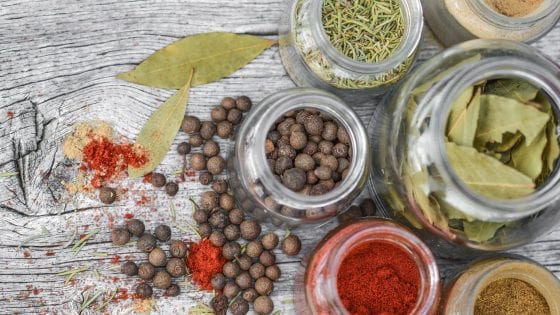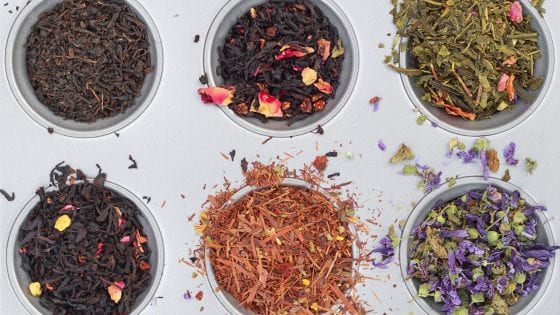What is food without its myriad flavors? Just a handful of ingredients are enough to transform a dish into something extraordinary. And herbs are the most convenient flavor boosters. We have gathered 7 dried herbs you must have in your kitchen. Dried herbs you can use over and over in a variety of dishes.
 Sprinkle some in your pasta, salads, sautéed vegetables, curries, fried rice and even dips and sauces, and they can lend that instant zing.
Sprinkle some in your pasta, salads, sautéed vegetables, curries, fried rice and even dips and sauces, and they can lend that instant zing.
Fresh Vs. Dried
Choosing between fresh or dried herbs is a matter of preference. Some chefs advise against using fresh ingredients when cooking a dish that needs to simmer longer than 45 minutes. Dried herbs pack a stronger, more condensed flavor, so if you’re substituting dried herbs in the place of fresh, then you’ll need to cut the amount in half.
Dried herbs do have a few pitfalls, however. They will eventually lose their flavor over time and should be replaced at least once a year. There is also evidence that suggests a substantial amount of nutrients are lost in the drying process.
Certain herbs are always better fresh and lose their distinctive flavor when dried. Delicate, leafy herbs like parsley, tarragon, and chives are always superior when fresh, and should typically be avoided when dried since they don’t add much flavor to a dish. They’re also best when raw or cooked for just a few minutes.
 The fresh versions are no doubt most sought after for their distinctive flavors, but their dried versions also serves the purpose, especially when the fresh ones are not readily available.
The fresh versions are no doubt most sought after for their distinctive flavors, but their dried versions also serves the purpose, especially when the fresh ones are not readily available.
And that’s not all. You can also use them to make flavored oils! When you are stocking up your kitchen cupboard, make sure you get your hands on a range of dried herbs that you can sprinkle into your food every given chance.
Here’s Our List of 7 Must-Have Dried Herbs
- Oregano
Most of us can’t imagine biting into our favorite slice of pizza without sprinkling some oregano on it. This is possibly the one herb you do have, and the one that you must, especially if you love Italian food.
The bitter and lemony flavor of the herb makes it blend well in pasta sauces, salads and pizzas. It is extensively used in Mediterranean cuisine, and the good part is that it doesn’t overpower the other flavors in a dish.
You can use it in your everyday cooking by adding it to toasts, sandwiches and even quick stir-fries.
- Thyme
A relative of oregano; thyme too is used extensively in cooking while preparing soups and meat-based dishes.
Its pungent minty flavor works wonders in stir-fries and baked pies as well.
A key ingredient in the popular Middle East condiment called za’atar. Also readily available in the market and can easily be stored for six months.
- Rosemary
Thinking of making a roast lamb? It is almost incomplete without adding rosemary into the baking tray. It wouldn’t be wrong to say that rosemary and lamb is a match made in heaven.
Roasted potatoes and pumpkin also pair very well with rosemary. You can use the herb in more ways than roasts – add it to your hung curd dip, in sandwiches, as a crust for pan-seared fish, or even as a skewer while making kebabs if you can get hold of the entire rosemary sprig. Those are wonderful replacements for the traditional bamboo skewer sticks.
- Sage
Sage is a herb which is commonly used in Italian cuisine while making the butter sauce for gnocchi.
Its strong flavor, which is slightly bitter, doesn’t lose out on its power when used in cooking, and as such is added while making stews or other slow-cooked dishes. It pairs well with fatty meats too.
Try and add it while crisping your morning bacon. You can drop it into your boiling pot of soup, or sprinkle it in batters for deep-fried snacks as well. The more you experiment, the more you will discover.
- Mint
A common herb in the Indian kitchen, mint is used in the making of many curries and shorbas.
Since fresh mint is not always available, the dried version comes as a blessing.
Sprinkle some in marinades, in butter to make a herbed spread, salads, sautéed mushrooms, and on your morning toast for some zing. The pungent flavor of mint is strong, so use it wisely.
- Basil
The sweet and pungent basil is an essential herb in the kitchen because it can do wonders to a whole bunch of dishes.
While cooking with dried basil, ensure that you use it in the beginning to allow it to develop its flavor.
You can also slightly sauté it in butter and add it to salads and soups, or use it to make home-made tomato sauces for a quick pasta dish. Basil works wonderfully well in Thai cooking.
- Dill
Say dill, and you immediately think of salmon. This delicate herb with its distinctive taste is an instant flavor booster.
It teams well with fish, crunchy veggies, fruits and yoghurt-based dips. You can use it to make cheese omelettes, steamed fish, dumplings, sandwiches and more!
 I love growing herbs at home. Here are easy tips for growing herbs indoors, tips for growing herbs on raised beds and finally here are some of my favorite tips for growing herbs in garden containers.
I love growing herbs at home. Here are easy tips for growing herbs indoors, tips for growing herbs on raised beds and finally here are some of my favorite tips for growing herbs in garden containers.
I also love this post with tips for starting an indoor garden and ways to save money.
It’s time to stock up and lend in more flavors to everyday cooking.
Finally, share with us; what are your favorite dried herbs? Those you keep on hand and restock when you run out?

Hi there! I’m Wanda – the creator and author at My Sweet Zepol a healthy food, travel, and lifestyle blog. Passionate about food photography, food styling, entertaining and advocate about creating memories around the kitchen table. With a mission to create easy-to-make meals for the busy family.

I am growing herbs in my garden. I need to start drying them for later.
Drying is the best way to preserve them and have them last!
I agree with all these. They’re all wonderful herbs. I love using them in many of my dishes.
I couldn’t agree more they are all wonderful spices!